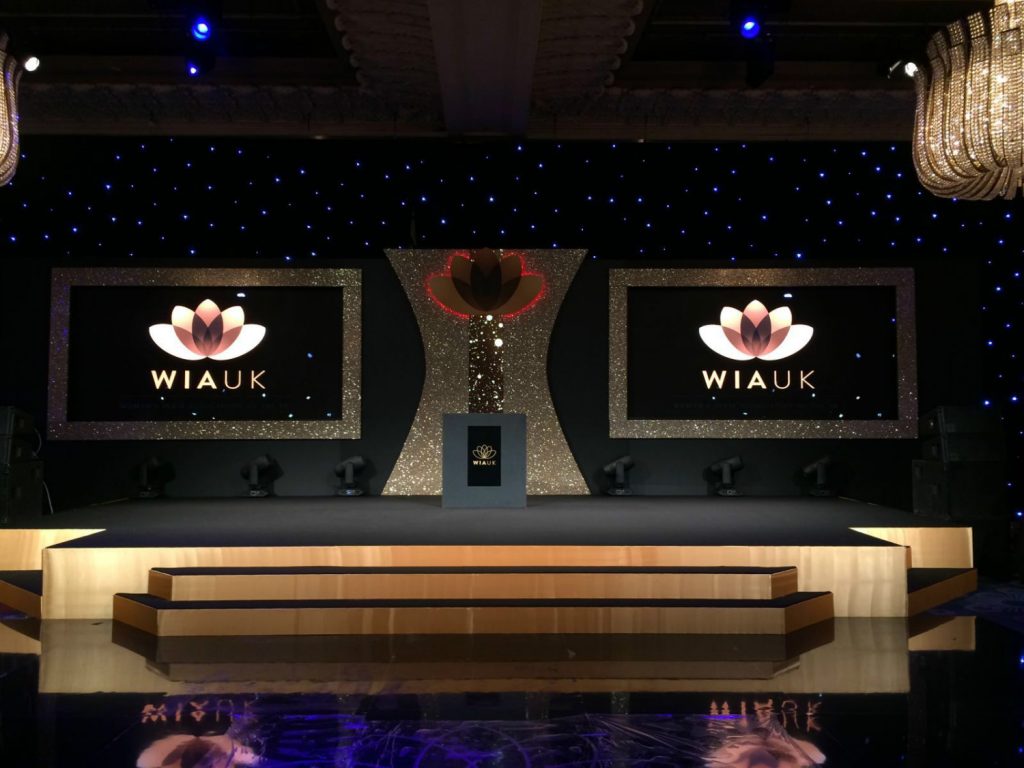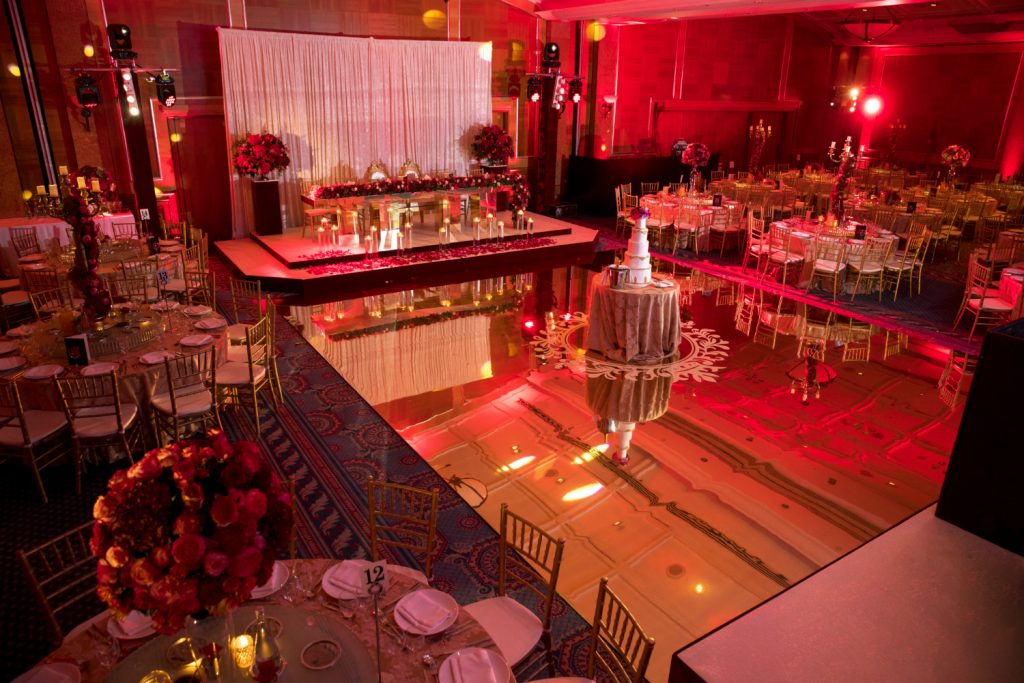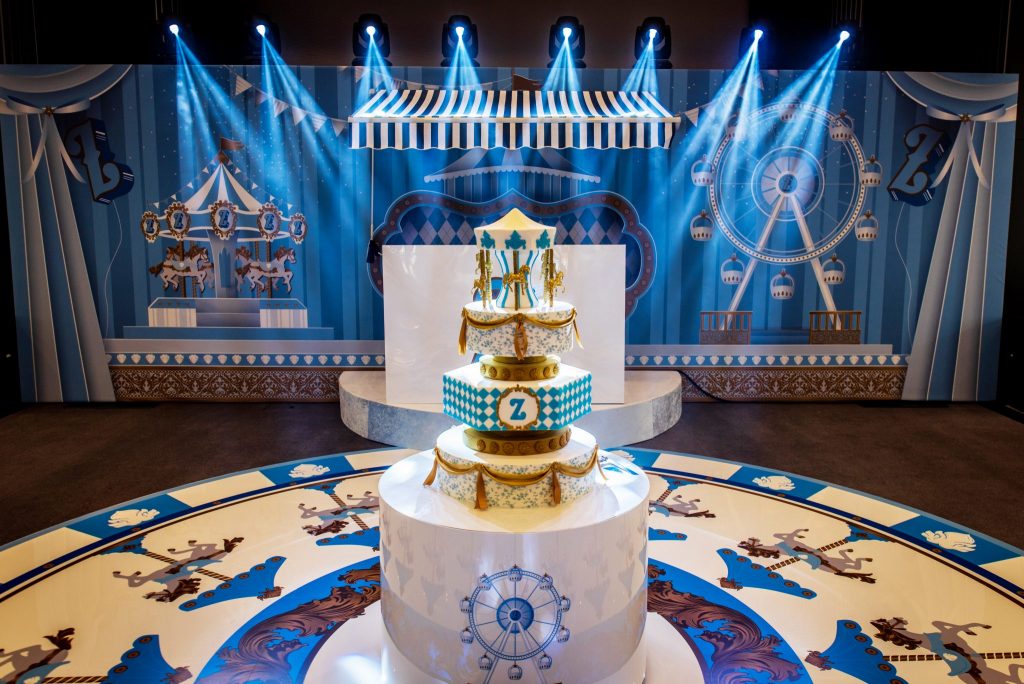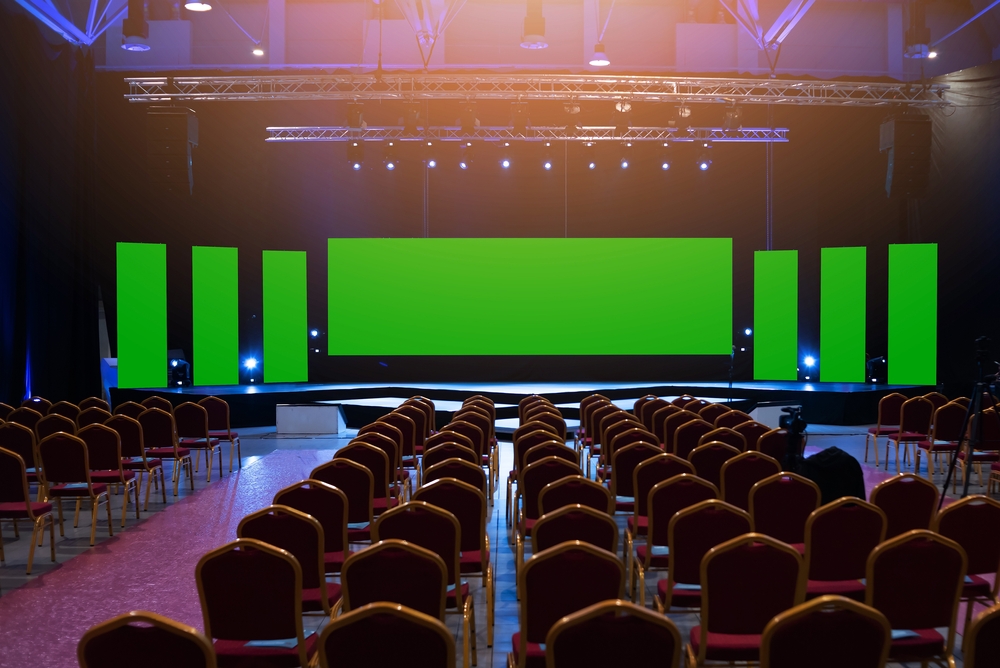A well-designed stage can utterly transform an event. From conferences to concerts, theatre productions to awards ceremonies, the staging plays a starring role in shaping audience experience. But what exactly constitutes great stage design? And how can you implement captivating concepts while working within budget constraints? This article spotlights inspirational stage design ideas to help you craft an unforgettable backdrop.
Defining Stage Design for Events

Stage design encompasses the visual aspects of a performance space, comprising components like:
- Lighting – From spotlights to LED panels, lighting establishes ambience and focal points.
- Sound – Speakers and acoustics that evenly project audio.
- Scenery – Physical backdrops and structures that frame the onstage action.
Thoughtful staging choices work cohesively to bolster entertainment and intensify audience response. Design elements guide the viewer’s attention, reveal key moments and communicate symbolic meanings that enrich understanding.
For live events, stage design performs the pivotal task of bringing people together in a shared experience. It sets the tone, conjures emotions and stitches together an event’s underlying narrative. Essentially, your stage design helps tell the story.
Why Stage Design Matters for Events
Imagine you’re organising an awards dinner. Attendees are greeted with bare walls, harsh ceiling lights and a few tables scattered about a makeshift platform. The atmosphere falls flat even before the proceedings start.
Now picture an elegant stage flooded in amber and violet. Shimmering streamers cascade from rigging. Engraved trophies line minimalist plinths. Guests network against an iconic skyline backdrop, energised by the glamorous setting.
The contrast demonstrates how dynamic design directly translates to audience enjoyment. Consider these key benefits:
1. Heightens Anticipation
Like a cinema’s sweeping red curtain, a thoughtfully composed stage stimulates viewer curiosity even before the main act. Audience members will crane to peek around structures or ponder meanings behind artistic oddities you’ve included. Their minds are primed for what unfolds next.
2. Boosts Energy
Properly aligned lighting, audio and layout promote free flow of people and ideas. Guests intermingle effortlessly thanks to clear sightlines and acoustics. Uplifting music playlists enhance mood. Vibrancy makes attendees feel more lively, engaged and connected.
3. Communicates Brand Identity
A custom stage aligns aesthetically with your organisation’s values, personality and objectives. For example, an edgy tech startup might opt for panels of sharp LED pixels, while a children’s charity could soften their stage with pastel shapes. Display your brand creatively through venues that reflect your essence.
4. Facilitates Interactivity
Interactive elements like touch screens, movable walls and multimedia encourage participation beyond passive listening or observation. When people directly shape their experience, they feel profoundly invested in your event and its purpose.
After examining why staging makes a substantial difference, let’s spotlight some winning concepts to inspire your own designs.
Ready to elevate your event experience? Discover the artistry of our event stage design services here and let us transform your vision into a captivating reality.
12 Creative Stage Design Ideas for Events

1. Suspended Lighting Installations
Strings, clusters and assortments of lights overhead instantly amplify aesthetics and atmosphere. Go minimalist with a canopy of exposed bulbs in modern glass orbs. Or explode with colour and texture using lanterns of varied sizes and shapes. Suspending lighting adds layers, depth and intrigue.
2. Personalised Backdrops
Customise a signature backdrop that becomes synonymous with your brand, like Coca Cola’s famous red disc shape. Backdrops lend personality, reinforce messaging through graphics and provide appealing selfie stations. Go topical with temporary movie posters or abstract with commissioned artwork. Tailor to different events while retaining your core visual identity.
3. Reflective Flooring
Mirrored flooring adds the illusion of depth while reflecting back overhead lighting and scenic detail. Use durable modular panels to create a custom platform underfoot. Reflective surfaces make rooms feel more spacious and lightweight objects seem suspended when they’re actually firmly placed.
4. Theatrical Drapes
Layered curtains, swathes of fabric and theatrical drapery build a sumptuous formal aesthetic. Enclose backstage areas or frame the whole stage proscenium in opulent style. Choose plush velvet in wine red and regal gold or keep it breezy with flowing organza. Adjust lighting to pick out intricate details and define spaces further with ceiling-to-floor drapes.
5. Dynamic Projection Mapping
Transform almost any surface using only light. Projection technology beams graphics, videos and effects onto irregular shapes and structures. Create immersive environments, interact with objects and highlight architectural accents. Use motion-triggered animations as guests descend stairs or have a virtual aquarium swim across the floor!
6. Multi-dimensional Objects
Incorporate conversational sculptural pieces. Suspend geometric shapes at staggering heights, cluster standalone spotlights onto angular plinths or decorate seating areas with bold modernist fixtures. Cubes, cones and polygonal features give a contemporary, gallery-style edge.
7. Branded Colour Outlines
Trace key architectural features like ceilings, doorways and wall edges with vivid neon lighting. Remotely control colour changes to transform the mood. Outline conforming shapes using LED strips or ground-fixed uplighters. Use your brand hue to tie the scheme together boldly.
8. Themed Staging
Go all-out with an immersive set related to your event genre or company history. Botanical product launch? Surround the stage with lush foliage and living walls. Centennial celebrations? Assemble era-specific props and decorations referencing past achievements. The right theming transports audiences into your narrative.
9. Rotating Sets
Incorporate turntables, rolling walls and rotating platforms to cycle whole stage sections in and out of view. Reveal scenes incrementally by rotating new details into the spotlight. Or completely changeover the set between production numbers. Moving set pieces add anticipation and multi-dimensional possibility.
10. Interactive Flooring
Transform ground underfoot into an interactive canvas. Embed LED capabilities so text and graphics light up when stepped on. Use plexiglass floor sections to showcase objects from below. Or embed round portals containing bubbling coloured liquids that squish and flow as guests walk over them.
11. Augmented & Virtual Reality
For totally immersive attending experiences, incorporate virtual or augmented reality tools. Provide VR headsets to showcase digital worlds aligned to your brand interests. Or project holographic AR elements onto real staging using spatial mapping technology. Blend IRL and VR spaces for maximum wow factor!
12. Kinetic Structures
Incorporate elements driven by motors or other mechanical parts to unveil platforms in surprising ways. Make staircases unfold from the ceiling or have the entire stage rotate to alter its shape configuration. Pieces reacting physically always impress and add versatility.
While this list presents some blockbuster ideas, don’t limit your thinking! Now that you know impactful stage design principles, invent novel concepts fitting your own events.
Unlock the possibilities for your next private event! Explore our comprehensive private event services and start planning an unforgettable experience tailored just for you.
Building Captivating Stages on a Budget

Elaborately engineered installations with hi-tech enhancements require significant investment. Yet you can implement visually arresting design choices at achievable price points too.
Follow these top tips:
Prioritise Lighting
Mood-enhancing lighting steals focus with minimal spend. Splurge on intelligent fixtures able to alter colour, intensity and beam angle. Supplement with affordable string lights and table lamps from discount homewares stores to embellish.
Incorporate Multimedia
Projectors and screens amplify aesthetics affordably. Display on-theme GIF loops, cinemagraphs or other dynamic imagery to heighten immersion. For music events, visualisers translating audio wavelengths into responsive animations engage attendees.
Work With Venue Architecture
Elegant draping easily amplifies NON-descript rooms by concealing flaws and adding softness. Use wooden stands, blocks or plinths to divide open spaces into defined functional zones. Repurpose oversized objects like antique mirrors as impromptu tables or statement art.
Embrace Empty Space
A sparse stage with careful spacing between elements appears sleek and modern. Negative space frames focal points elegantly without overwhelming. Place fewer pieces purposefully rather than cluttering the stage haphazardly.
Multi-task Items
Beanbags pull double duty for seating and acoustic treatment. Mirrors reflect light across rooms. Sheer curtains partition backstage discreetly while allowing light permeability. Items working on multiple levels decrease costs.
Hire & Repurpose
Save purchasing pieces you’ll seldom reuse. Hire theatrical drapes, dancers’ marley flooring and other specialty gear as needed instead of buying outright. Upcycle cargo crates, fruit crates and cable reels from local businesses as rustic platters.
Curtain Call for Captivating Stage Design
Whether building sets from scratch or elevating existing infrastructure through lighting and decoration, intentionally designed stages engage attendees profoundly. Your environment’s aesthetics influence guest enjoyment exponentially by sparking excitement, communicating core values and facilitating interactions.
Review these daemonic ideas when conceptualising immersive backgrounds for concerts, conferences, galas and diverse events. Prioritise lighting ambience, project multimedia imagery and incorporate interactive elements to generate maximum appeal affordably.
Most importantly, align all scenic aspects to reinforce your event’s underlying narrative. Decor choices should feel cohesive rather than randomly assembled. Build layers of sensory details that work in harmony to share your story. When the physical setting helps express the themes and emotions at play, you’ve built a winning stage design.
Ready to stand out at your next exhibition? Dive into the possibilities of our custom exhibition stands. Explore our portfolio and let’s craft a standout display tailored to your brand’s unique identity.

